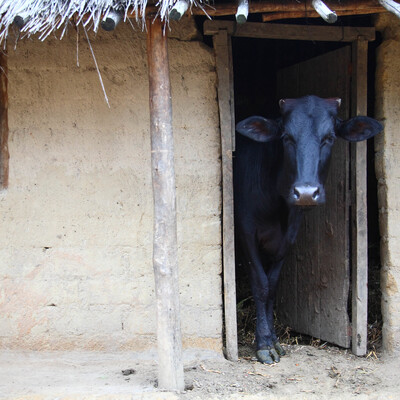
New study provides the first detailed report on the occurrence of the tick-borne parasite Babesia bovis in cattle in Kenya
Tick-borne diseases pose a significant threat to smallholder livestock keeping in Kenya and the East Africa region at large. One of these tick-borne diseases is babesiosis, caused by the protozoan parasite Babesia.
Babesia bigemina is endemic and widespread in East Africa while the status of the more pathogenic Babesia bovis remains unclear despite the presence of the Rhipicephalus microplus tick vector which transmits both species.
Recent studies have confirmed the occurrence of R. microplus in coastal Kenya, and although B. bovis DNA has previously been detected in cattle blood in Kenya, no surveillance has been done to establish its prevalence.
To fill this research gap, scientists from the International Livestock Research Institute (ILRI), the University of Nairobi, the University of Sydney and Washington State University carried out a molecular survey to investigate the occurrence of B. bovis in cattle in Kwale County, Kenya, where R. microplus is present in large numbers. The study is published in Parasites & Vectors (May 2022).
A species-specific multiplex TaqMan real-time polymerase chain reaction (PCR) assay targeting two Babesia bovis genes, 18S ribosomal RNA and mitochondrially-encoded cytochrome b and B. bigemina cytochrome b gene was used to screen 506 cattle blood DNA samples collected from Kwale County for presence of Babesia parasite DNA.
A subset of 29 B. bovis real-time PCR-positive samples were further amplified using a B. bovis-specific spherical body protein-4 (SBP-4) nested PCR and the resulting products sequenced to confirm the presence of B. bovis.
A total of 131 animals (25.8%) were found to have bovine babesiosis based on real-time PCR. Twenty-four SBP4 nucleotide sequences obtained matched to B. bovis with a similarity of 97–100%.
Of 131 infected animals, 87 (17.2%) were positive for B. bovis while 70 (13.8%) had B. bigemina and 26 (5.1%) were observed to be co-infected with both Babesia species.
A total of 61 animals (12.1%) were found to be infected with B. bovis parasites only, while 44 animals (8.7%) had B. bigemina only.
Babesia bovis and B. bigemina infections were detected in the three Kwale sub-counties.
These findings reveal high prevalence of pathogenic B. bovis in a Kenyan area cutting across a busy transboundary livestock trade route with neighbouring Tanzania.
The Babesia multiplex real-time PCR assay used in this study is specific and can detect and differentiate the two Babesia species and should be used for routine B. bovis surveillance to monitor the spread and establishment of the pathogen in other African countries where B. bigemina is endemic.
Moreover, these findings highlight the threat of fatal babesiosis caused by B. bovis, whose endemic status is yet to be established.
Citation
Githaka, N.W., Bishop, R.P., Šlapeta, J., Emery, D., Nguu, E.K. and Kanduma, E.G. 2022. Molecular survey of Babesia parasites in Kenya: first detailed report on occurrence of Babesia bovis in cattle. Parasites & Vectors 15(1): 161.
Photo credit: Tick research in ILRI's biotechnology labs in Nairobi, Kenya (ILRI/David White)

















